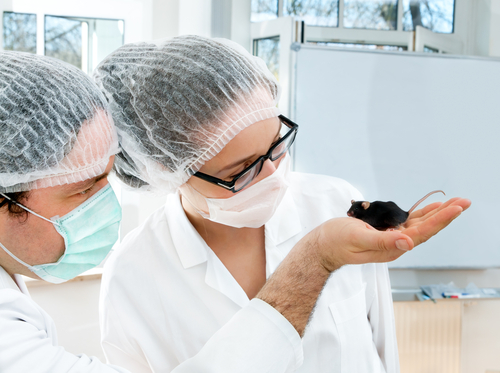Diazoxide Improved Body Composition in PWS Mice Models

Diazoxide helps reduce weight, body fat, and improve blood glucose levels and endurance capacity, in mice models of Prader-Willi syndrome (PWS), a study shows.
The findings suggest that diazoxide targets cellular mechanisms that contribute to PWS development. In addition, the study provides further evidence demonstrating diazoxide’s potential to treat patients with PWS.
The study “Chronic diazoxide treatment decreases fat mass and improves endurance capacity in an obese mouse model of Prader-Willi syndrome” was published in the journal Molecular Genetics and Metabolism.
Diazoxide has been shown previously to improve metabolic parameters and decrease fat mass in obese children and adults with PWS. The medicine has received orphan drug status from the U.S. Food and Drug Administration (FDA) and European Medicines Agency (EMA) as treatment for PWS.
Soleno Therapeutics is developing a diazoxide choline controlled-release (DCCR) to be taken orally (tablet) once daily to treat PWS.
Results of a Phase 1/2 trial (PC025, NCT02034071) revealed that DCCR reduced excessive eating and mean body fat mass — hallmark characteristics of PWS — in 11 patients treated with DCCR doses of 4.2 mg/kg daily. Also, the treatment increased lean body mass and reduced the levels of so-called “bad cholesterol.”
Now, a research team at the University of Alberta in Canada used a genetically engineered mice model of PWS to further evaluate the benefits of diazoxide. The animals were modified to lack the MAGEL2 gene, which is associated with PWS development. This experimental model mimics some of the features of human disease, including cognitive impairment, increased fat mass, reduced lean mass, and voluntary activity.
PWS and healthy mice both were fed a high-fat diet for 20 weeks, upon which they received treatment with 150 mg/kg per day of diazoxide in addition to a conditional diet for more 12 weeks.
The treatment caused a significant loss of body weight in both groups, but it was more effective in control mice. By the end of the study healthy male and female mice lost 24% and 23% of body weight, respectively, whereas PWS male and females mice lost 16% and 13%.
Still, six weeks of treatment with diazoxide were sufficient to cause a significant decrease in total fat mass in all animals, an effect that was sustained for the following six weeks.
Diazoxide had no effect on food intake rates, overall activity or daily energy expenditure in any of the animals.
However, animals showed improved endurance capacity when exposed to physical activity (treadmill task). Mice used less energy to maintain speed on the treadmill compared to before treatment, demonstrating they were more capable to maintain a higher level of energy expenditure during exercise.
“Chronic diazoxide administration reduced fat mass, decreased blood glucose, and improved endurance capacity in high fat diet-induced obese mice that were either wildtype or mutant for the PWS gene [MAGEL2]” the researchers wrote.
Collectively, these results show the mechanism involved in weight loss via diazoxide is not specific to MAGEL2-induced disease, but instead shared by both obese and PWS conditions.
“The biological pathways impacted by diazoxide may be rational pharmacological targets in PWS and other disorders diseases associated with obesity,” the team concluded.






